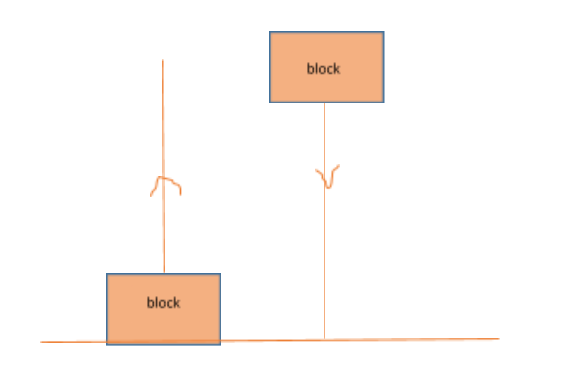
A particle is moving along a straight line. The displacement of the particle becomes zero in a certain time (t > 0). The particle does not undergo any collision.
A. The acceleration of the particle may be zero always.
B. The acceleration of the particle may be uniform
C. The velocity of the particle must be zero at some instant
D. The acceleration of the particle must changes its direction
Answer
589.5k+ views
Hint: Use concept of gravitational force. Acceleration due to gravity (g) will always act downward that is toward the direction of ground. The particle does not undergo any collision means no other force is acting except gravitational force.
Complete Step-by-Step solution:
To solve this kind of question first understand what question you want to convey.
A particle is along a straight line means a particle is on a straight line and the displacement of the particle becomes zero at a certain time but the particle doesn't go under any collision.
Aim: Find reason by considering the statement which is given in options.
Consider a block. Throw it in an upward direction from the ground. Notice that it is under gravitational force. Velocity of block must be v on ground. When the block reaches its maximum height then at a certain time and distance, the velocity at that point will be zero. After that the block will return to ground by the force of gravitation. Acceleration due to gravity in acting downward direction.
As we can in the diagram acceleration of the block will not zero always. It will be zero only at maximum height and acceleration will always be uniform as no other forces are acting on the block except g. so option two is correct.
If acceleration is zero then it is obvious velocity will also be zero at that time. Since acceleration is defined as velocity per unit time. Therefore option third is correct.
Diagram:

Correct option is (B) & (C)
Note: Acceleration is defined as velocity covered by block in per unit time. If an object is ground then it must be under the influence of gravitational force. Velocity and acceleration will always be zero at its highest position of the body if it is under gravitational force.
Complete Step-by-Step solution:
To solve this kind of question first understand what question you want to convey.
A particle is along a straight line means a particle is on a straight line and the displacement of the particle becomes zero at a certain time but the particle doesn't go under any collision.
Aim: Find reason by considering the statement which is given in options.
Consider a block. Throw it in an upward direction from the ground. Notice that it is under gravitational force. Velocity of block must be v on ground. When the block reaches its maximum height then at a certain time and distance, the velocity at that point will be zero. After that the block will return to ground by the force of gravitation. Acceleration due to gravity in acting downward direction.
As we can in the diagram acceleration of the block will not zero always. It will be zero only at maximum height and acceleration will always be uniform as no other forces are acting on the block except g. so option two is correct.
If acceleration is zero then it is obvious velocity will also be zero at that time. Since acceleration is defined as velocity per unit time. Therefore option third is correct.
Diagram:

Correct option is (B) & (C)
Note: Acceleration is defined as velocity covered by block in per unit time. If an object is ground then it must be under the influence of gravitational force. Velocity and acceleration will always be zero at its highest position of the body if it is under gravitational force.
Recently Updated Pages
Master Class 10 General Knowledge: Engaging Questions & Answers for Success

Master Class 10 Computer Science: Engaging Questions & Answers for Success

Master Class 10 English: Engaging Questions & Answers for Success

Master Class 10 Social Science: Engaging Questions & Answers for Success

Master Class 10 Maths: Engaging Questions & Answers for Success

Master Class 10 Science: Engaging Questions & Answers for Success

Trending doubts
The shortest day of the year in India

Why is there a time difference of about 5 hours between class 10 social science CBSE

Write a letter to the principal requesting him to grant class 10 english CBSE

What is the median of the first 10 natural numbers class 10 maths CBSE

The Equation xxx + 2 is Satisfied when x is Equal to Class 10 Maths

State and prove converse of BPT Basic Proportionality class 10 maths CBSE




